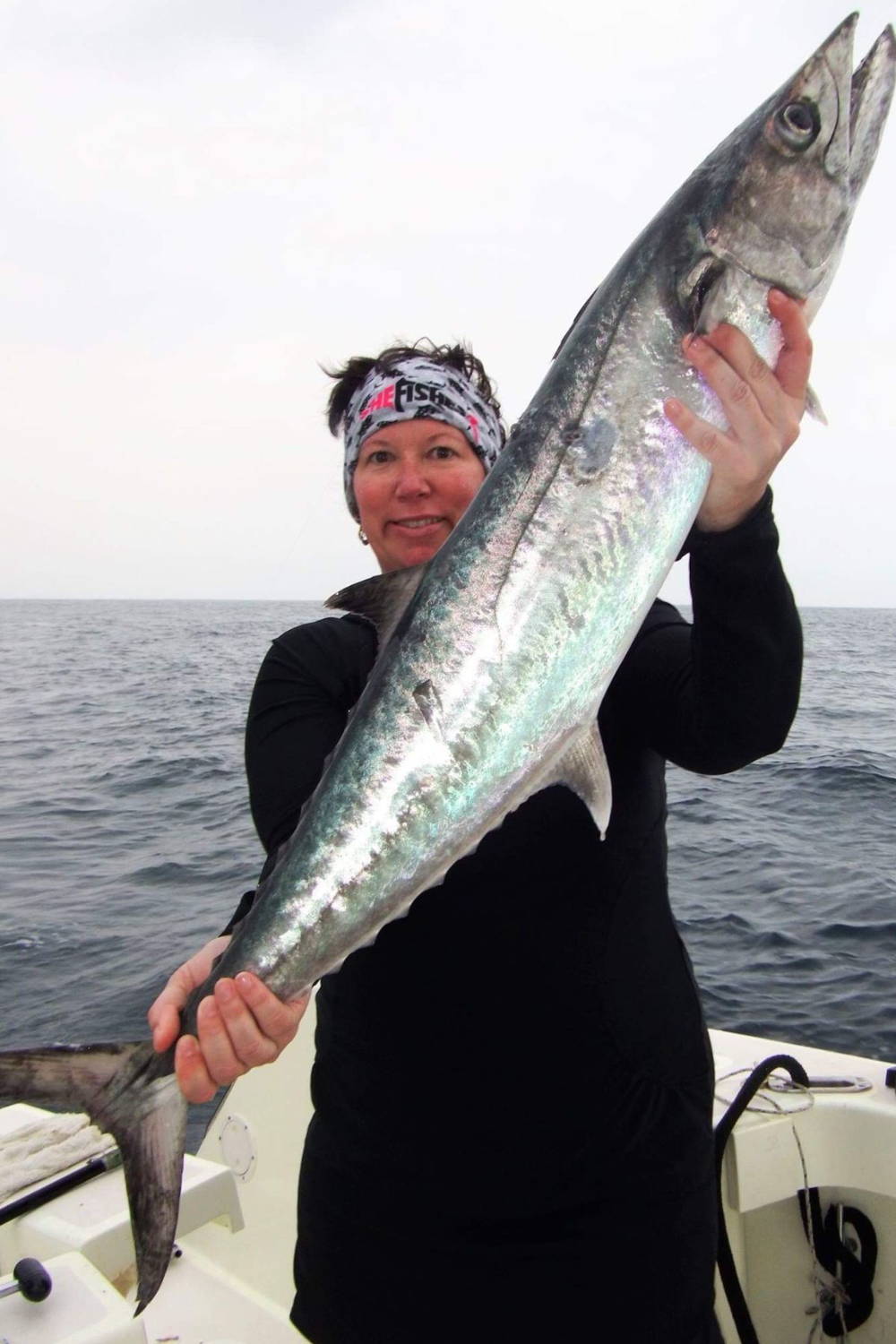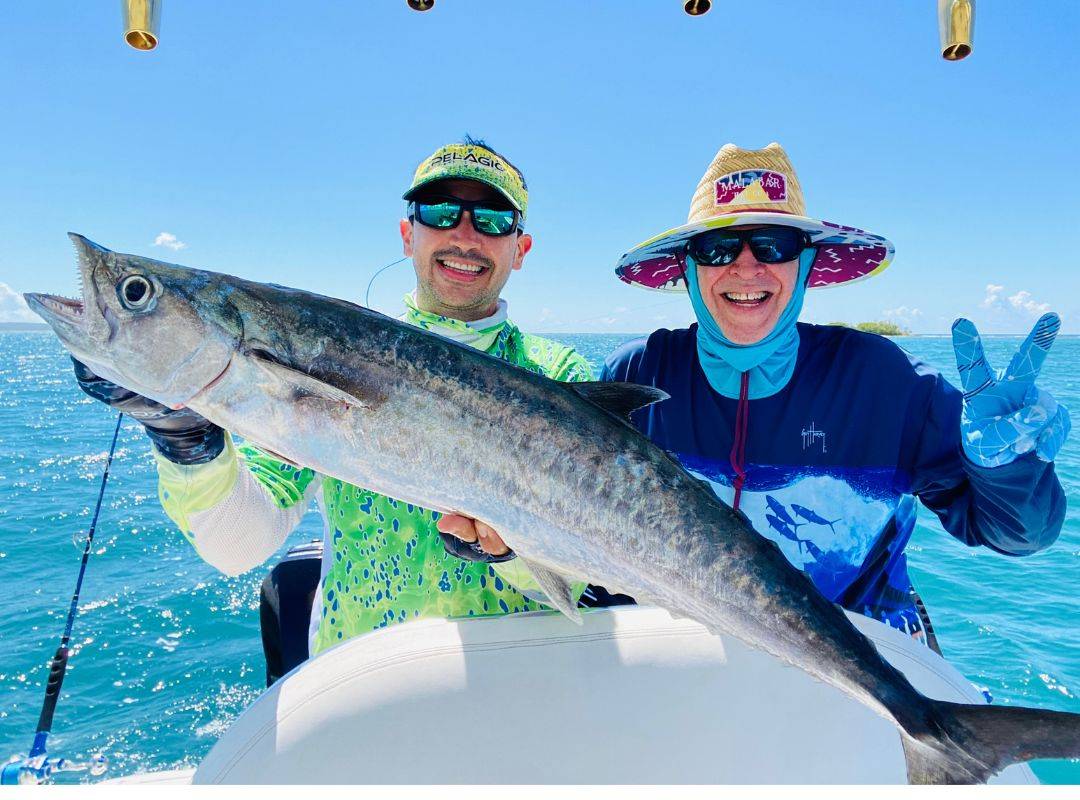Your Cart is Empty

Discover the secrets to successful king mackerel fishing with our comprehensive guide. From expert tips and gear recommendations to proven techniques, this guide is your key to mastering how to catch king mackerel.
Topics discussed:
UNDERSTANDING THE KING MACKEREL: HABITAT, BEHAVIOR, AND MIGRATION PATTERNS
SEASONALITY: BEST TIMES OF THE YEAR FOR KING MACKEREL FISHING
ESSENTIAL GEAR AND EQUIPMENT FOR KING MACKEREL FISHING
CHOOSING THE PERFECT FISHING SPOT: FINDING THE HOTSPOTS FOR KING MACKEREL
PROVEN TECHNIQUES AND STRATEGIES FOR CATCHING KING MACKEREL
King mackerel, also known as kingfish, are highly migratory fish found in both the Atlantic Ocean and the Gulf of Mexico. They inhabit warm waters and are commonly found near coastal areas, reefs, and wrecks. Understanding the habitat, behavior, and migration patterns of king mackerel is crucial for successful fishing.
King mackerel are known for their aggressive feeding behavior and are opportunistic predators. They primarily feed on smaller fish, such as baitfish and squid. During their migration, they follow baitfish schools, which can be found in areas with strong currents and upwellings. These areas provide an abundant food source for king mackerel.
King mackerel have a distinct migration pattern, with different populations moving along the east coast of the United States at different times of the year. They migrate north in the spring and summer months, following the warming waters. In the fall and winter, they migrate south to warmer waters. Understanding these migration patterns can help anglers locate the best fishing spots at different times of the year.
Spring Awakening: As temperatures rise, king mackerel begin their migration northward, signaling the onset of prime fishing season. Spring offers exciting opportunities as these fish move closer to the shore, presenting anglers with excellent chances for a thrilling catch.
Summer Bounty: Summer is the zenith of king mackerel fishing. The warm waters attract schools of mackerel, creating a feeding frenzy that anglers eagerly anticipate. Longer days and calm seas make it an ideal time to head out and test your skills against these powerful adversaries.
Fall Feeding Frenzy: As autumn sets in, king mackerel embark on their southward migration, providing another window of opportunity for anglers. The cooling waters trigger feeding behavior, and strategic anglers can capitalize on this period to land some impressive catches.
Winter Challenges: While winter brings cooler temperatures and challenges, it doesn't mean the end of king mackerel fishing. In certain regions, mackerel can still be found in warmer waters near offshore structures. Understanding their behavior in colder months adds an intriguing aspect to the angling experience.

To have a successful king mackerel fishing adventure, it is important to have the right gear and equipment. Here are some essentials:
Rod and Reel: A medium to heavy-duty spinning or baitcasting rod and reel combo is recommended for king mackerel fishing. Look for a rod with a sensitive tip and a strong backbone to handle the fight of these powerful fish.
Fishing Line: A strong and low-diameter braided line in the range of 30 to 50 pounds is ideal for king mackerel fishing. It provides sensitivity and strength, allowing you to feel the slightest nibble and withstand the mackerel's strength.
Leader: A wire type leader is essential to prevent bite-offs while king mackerel fishing. A 7-strand, uncoated fishing leader is a great choice. It is less prone to kinking and is easily tied.
Fishing Knots: For king mackerel fishing, two knots are critical. Use a Uni Knot to attach the braided main line to the swivel. Use a Figure 8 knot to tie the 7-strand wire to the swivel.
Safety Gear: Don't forget to bring essential safety gear like life jackets, a first aid kit, and a signaling device in case of emergencies.
Having the right gear and equipment can make a big difference in your king mackerel fishing success.
Finding the perfect fishing spot is crucial for a successful king mackerel fishing adventure. Here are some tips to help you locate the hotspots:
Look for Structure: King mackerel are often found near reefs, wrecks, and other underwater structures. These structures provide shelter for baitfish, which in turn attract the king mackerel.
Follow the Birds: Seabirds such as seagulls and pelicans can be a good indicator of fish activity. If you see a flock of birds diving into the water, there's a good chance there are baitfish and king mackerel below.
Pay Attention to Currents: King mackerel prefer areas with strong currents and upwellings, as they provide an abundant food source. Look for areas where currents converge or where there are changes in water temperature.
Another recommended strategy is to fish outgoing tides at inlets. The outgoing tide sweeps baitfish and nutrients out and often congregate baitfish and king mackerel.
Read more about Finding Fish Offshore

Catching king mackerel requires a combination of skill, knowledge, and the right techniques. Trolling is the most popular technique for targeting king mackerel from a boat. It allows the angler to cover more ground as well as keep multiple lines and lures deployed without tangling.
A king mackerel trolling spread will typically either be all live or artificial baits due to differences in the trolling speed.
Live bait: King mackerel are fond of live bait. Use menhaden, bluefish, mullet, or othersrigged on stinger rigs to present a lively and enticing offering. These live baits are trolled just faster enough to keep the lines straight. If the baits are dragged, they will die.

Dead bait: Often live bait is unavailable or if you have not located the king mackerel yet, trolling dead baits is a good option. These baits can be trolled at faster speeds to cover more ground.
The same rig described earlier can be used for these dead baits as well. TrollTrue Lures provide a fast and easy way to rig a variety of dead baits including cigar minnows, ribbonfish, and ballyhoo.
King mackerel are known for their preference for faster-moving prey. Trolling speeds between 4 to 7 knots are generally effective in enticing strikes.
Artificial baits: A third option for trolling is the use of artificial lures. Select lures that mimic the mackerel's natural prey. Diving plugs and spoons in shiny, reflective colors are particularly effective
Always remember that king mackerel can be found throughout the water column. Use deep diving lures and downriggers to present baits at a variety of depths
Adjust the depth based on the water temperature and the location of the fish.Use a variety of baits and vary your speed and depth until you find what works best. Experiment with different techniques and adapt to the conditions to maximize your chances of catching king mackerel.
As passionate anglers, it's our responsibility to ensure the sustainability of the sport we love. King mackerel, with their prized status among sport fishers, demand a thoughtful approach to conservation. In this guide, we'll explore key conservation practices that not only safeguard the future of king mackerel populations but also contribute to the long-term health of our oceans.
Know and Adhere to Fishing Regulations: Understanding and following fishing regulations is fundamental to sustainable angling. Regulations are in place to protect the species, ensuring that populations remain healthy. Be informed about size limits, bag limits, and seasonal closures specific to king mackerel in your fishing area.
Practice Catch and Release: Consider releasing larger king mackerel, especially those that exceed recommended size limits. These larger individuals are often crucial for breeding and maintaining the genetic diversity of the population. Proper catch and release techniques, such as minimizing handling time, can significantly improve the chances of survival for released fish.
Limit Your Harvest: While the thrill of a successful catch is undeniable, practicing responsible harvesting is vital. Only keep what you can use and avoid catching more than the allowed limit. This ensures that you contribute to the conservation of king mackerel populations rather than depleting them.
Use Sustainable Fishing Gear: Opt for gear that minimizes the impact on king mackerel and their habitat. Choose non-offset circle hooks to reduce the likelihood of deep hooking, and use single hooks instead of treble hooks todecrease injury to the fish.